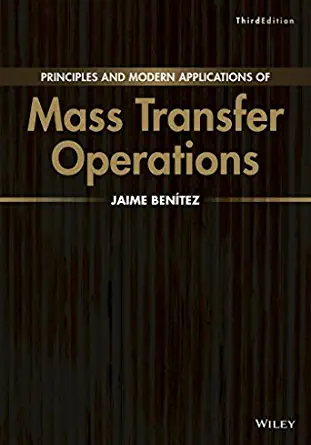The fresh feed consists of argon (1 mol%) and stoichiometric amounts of N2 and H2. The reactor feed has a molar flow rate of 100
The fresh feed consists of argon (1 mol%) and stoichiometric amounts of N2 and H2. The reactor feed has a molar flow rate of 100 mol/min and a composition of 15 mol% argon, 21.25 mol% N2, and 63.75 mol% H2. The reactor feed temperature is 400C. The fractional conversion of N2 to NH3 in the reactor is 0.15 mol N2 reacted/mol N2 fed to the reactor. The hot reactor effluent gas is used to heat the recycle gas from the separator in a combined reactor effluent/recycle heat exchanger. After passing through this heat exchanger, the reactor effluent gas passes through a condenser where the NH3 product is condensed. Liquid NH3 is separated from the noncondensable recycle gases. A purge stream is taken off the separator off-gas to maintain the level of argon at 15 mol% feed to the reactor. In this particular process, the converter is operated adiabatically and the heat of reaction at 400C was found to be 53.109 kJ/mol at the pressure of the reactor. The following table gives the heat capacities at the pressure of the reactor. Note that the given heat capacities are assumed to be constant over the temperature range found in the reactor: Instructor: Dr. Chandra Mouli MR 2 | Page Determine the flow rates in moles per minute and compositions in mole percent of (a) Fresh feed stream. (b) Separator purge gas stream. (c) Recycle gas stream. (d) Estimate the temperature of the effluent gases from the converter. (e) If the recycle gas stream enters the heat exchanger at 50C and leaves the exchanger at 400C, determine the outlet temperature of the reactor effluent stream from the heat exchanger. Assume no condensation of ammonia in the heat exchanger.
Step by Step Solution
There are 3 Steps involved in it
Step: 1

See step-by-step solutions with expert insights and AI powered tools for academic success
Step: 2

Step: 3

Ace Your Homework with AI
Get the answers you need in no time with our AI-driven, step-by-step assistance
Get Started


